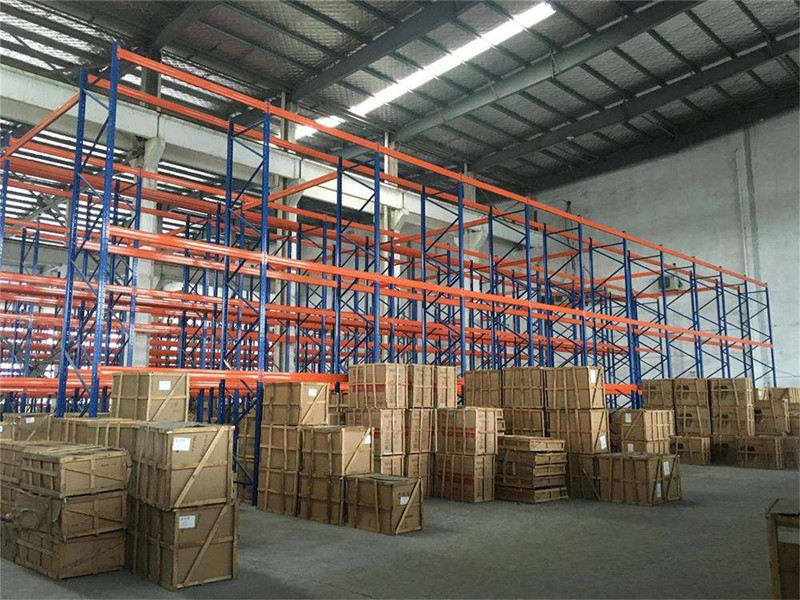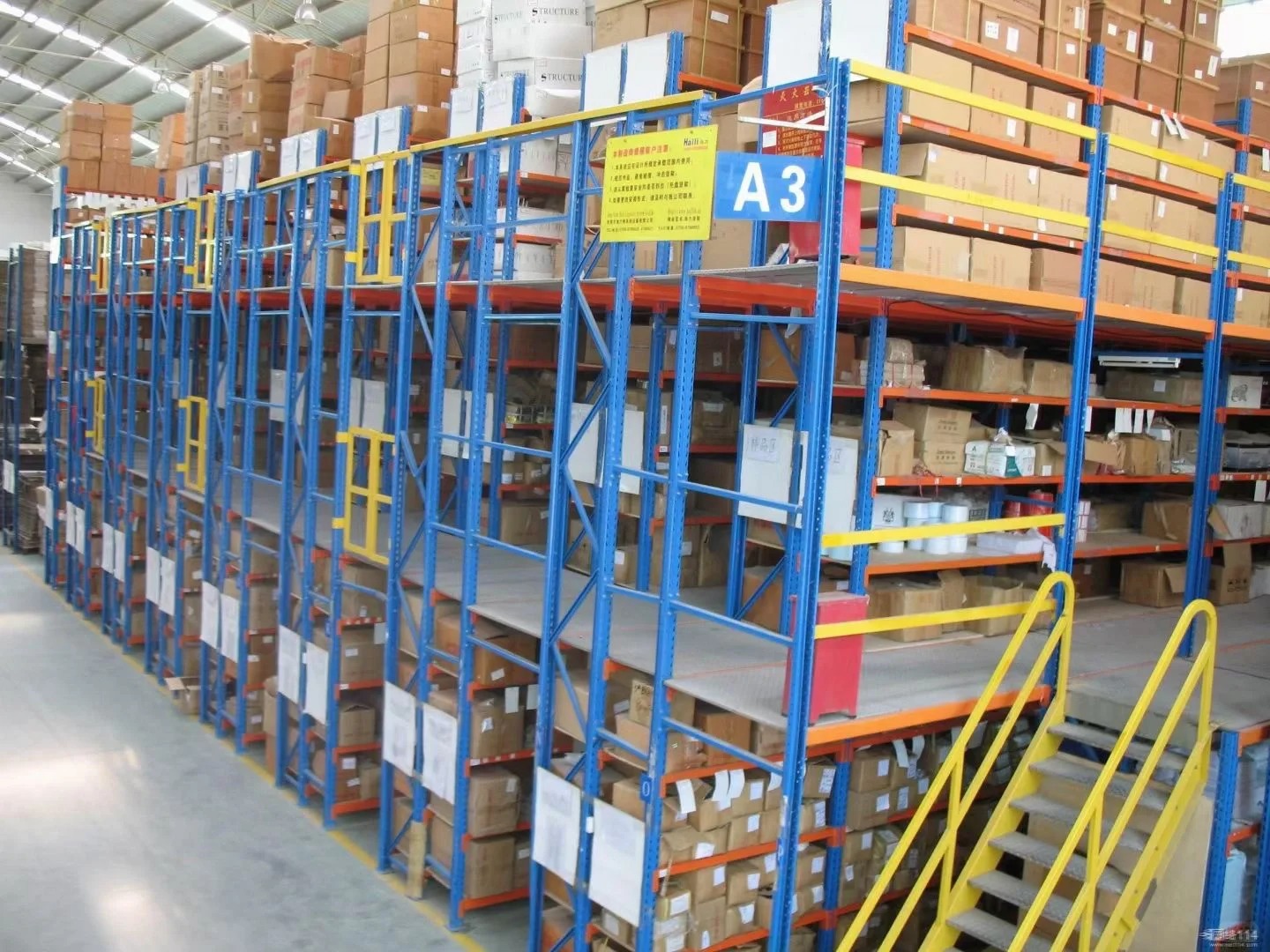In the relentless pursuit of maximizing warehouse space and operational efficiency, storage solutions must evolve. Among the most effective strategies for high-density pallet storage, the Drive In Pallet Racking System stands out as a powerful solution, particularly for operations dealing with large volumes of similar products. This comprehensive guide delves into the intricacies of drive-in racking, exploring its design, operation, benefits, limitations, and ideal applications to help you determine if it's the right fit for your warehouse.

1. Understanding the Core Design and Structure of a Drive In Pallet Racking System
Unlike traditional selective racking where aisles access every pallet position, a Drive In Pallet Racking System is fundamentally designed for depth. Its structure consists of:
•Continuous Rails: Instead of individual beams supporting each pallet level, drive-in systems feature continuous inclined rails running the entire length of the bay, on both sides. These rails act as guides and supports for the pallets.
•Minimal Aisles: The defining characteristic is the significant reduction in the number of aisles. Warehouses utilizing a Drive In Pallet Racking System have only one access aisle per multiple rows deep. Forklifts literally "drive in" to the depth of the rack to deposit or retrieve pallets.
•Bay Depth: Bays can be designed to be very deep – commonly 3, 4, 5, 6, 7, or even more pallets deep – depending on building dimensions, product turnover, and forklift capabilities.
•Robust Framework: The upright frames and bracing are engineered to withstand significant impact loads from forklifts operating within the confined space of the rack structure. They are typically heavier gauge steel than selective racks.
•Guide Rails & Wheel Guards: Low-level guide rails help direct forklifts into the correct lane, while wheel guards protect the uprights from impacts. Safety bars or chains at the back prevent pallets from being pushed through.
This design philosophy prioritizes storing the maximum number of pallets within a given cubic footprint, sacrificing immediate access to every pallet for sheer density. The Drive In Pallet Racking System is inherently a Last-In, First-Out (LIFO) system due to its operational nature.
2. How a Drive In Pallet Racking System Operates: The Forklift Workflow
The operation of a Drive In Pallet Racking System is intrinsically linked to the capabilities of the forklift and the skill of the operator:
1.Lane Entry: The forklift operator approaches the designated lane entrance within the access aisle. They must carefully align the forklift with the lane opening.
2.Driving In: The operator drives the forklift, carrying a pallet, directly into the depth of the rack structure, traveling along the continuous rails. Precision is critical to avoid collisions with the uprights or existing pallets.
3.Pallet Placement: Once at the desired position (typically the next available spot at the front or deepest spot for initial loading), the operator lowers the pallet onto the rails. The pallet rests directly on the inclined rails of the rack structure on both sides. No cross-beams are present within the lane itself.
4.Backing Out: After depositing the pallet, the operator carefully reverses the forklift out of the lane back into the access aisle.
5.Retrieval (LIFO): Retrieval follows the reverse LIFO principle. To access a pallet, the operator must drive in, remove the front pallet, back out, and then repeat the process to access pallets stored deeper in the lane. Accessing a specific pallet buried deep often requires moving several front pallets temporarily.
This process demands highly skilled operators, excellent spatial awareness, and forklifts specifically suited for narrow aisle maneuvering and capable of handling the required lift heights safely within the confined rack structure. The efficiency of the entire Drive In Pallet Racking System hinges on operator proficiency.
3. Key Advantages: Why Choose a Drive In Pallet Racking System?
The primary motivation for implementing a Drive In Pallet Racking System is the significant return on investment through space and cost savings:
•Exceptional Storage Density: This is the undisputed champion. By drastically reducing the number of aisles (often by 50-75% compared to selective racking), drive-in systems can store significantly more pallets within the same warehouse footprint. The cubic space utilization is maximized.
•Reduced Storage Cost per Pallet: The high density directly translates to a lower cost per pallet position. The infrastructure cost (racking) and the building cost (less square footage needed per pallet) are spread over more stored units, offering a compelling financial advantage for suitable inventory.
•Ideal for High-Volume, Low-Variety SKUs: It excels when storing large quantities of identical products (SKUs) with long-term storage needs or predictable rotation (especially if LIFO is acceptable). Think seasonal goods, raw materials, or finished goods with stable demand.
•Maximizes Building Cube: By allowing deep storage and utilizing vertical height effectively, a Drive In Pallet Racking System helps warehouses fully exploit their available cubic space, delaying the need for costly expansion or relocation.
•Reduced Aisle Lighting & Maintenance: Fewer aisles mean less linear footage requiring lighting, potentially lowering energy costs. It also reduces the floor area needing regular maintenance.
For businesses struggling with space constraints and handling large volumes of homogeneous products, the density benefits of a Drive In Pallet Racking System are often transformative.

4. Important Considerations and Limitations
While powerful, a Drive In Pallet Racking System is not a universal solution. Understanding its constraints is vital:
•LIFO Inventory Management: This is the most significant operational constraint. Drive-in systems inherently operate on a Last-In, First-Out basis. Retrieving a specific pallet stored deep within a lane requires moving all pallets in front of it, which is time-consuming and labor-intensive. It's unsuitable for FIFO (First-In, First-Out) requirements or operations needing direct access to every SKU or lot code.
•Reduced Accessibility: Only the pallets at the very front of a lane are immediately accessible. Access times for pallets deeper in the system are higher compared to selective racking.
•Higher Forklift Operator Skill Requirement: Operating within the tight confines of the rack demands exceptional operator skill, training, and constant vigilance. Inexperienced operators significantly increase the risk of costly accidents and damage.
•Increased Risk of Damage: The close proximity of racking uprights and the need for precise maneuvering inside the structure inherently raise the potential for forklift impacts, damaging the rack, stored product, or the forklift itself. Product damage can also occur if pallets aren't placed squarely on the rails.
•Slower Throughput (for non-front pallets): While loading a deep lane can be efficient initially, retrieving pallets not at the front is slower. This impacts overall warehouse throughput speed compared to systems offering direct access.
•Requires Uniform Pallets & Loads: The system relies on pallets being sturdy, consistent in size, and able to span the gap between the rails. Loads must be stable and evenly distributed to sit safely on the rails without tipping.
•Higher Initial Racking Cost (per foot, not per pallet): While the cost per pallet position is often lower, the rack structure itself (continuous rails, heavy-duty uprights) can have a higher initial cost per linear foot compared to basic selective racking. However, the density usually justifies this.
5. Ideal Applications: Where a Drive In Pallet Racking System Shines
The Drive In Pallet Racking System finds its strongest foothold in specific warehousing scenarios:
•Cold Storage Facilities: Refrigerated and frozen storage space is extremely expensive. Maximizing density to reduce the costly cubic footage required makes drive-in racking highly attractive for storing large quantities of frozen foods, dairy, or beverages. The energy savings from reduced aisle space are also significant.
•Beverage Distribution: Breweries, bottlers, and distributors handling large volumes of homogeneous SKUs (e.g., specific can/bottle sizes and brands) where LIFO rotation is often acceptable.
•Seasonal Product Warehousing: Storing items like holiday decorations, garden supplies, or seasonal apparel where goods are received in bulk, stored for extended periods, and then shipped out in large quantities.
•Bulk Raw Material Storage: Manufacturing facilities storing large quantities of uniform raw materials (e.g., resins, paper rolls, packaging) consumed in production runs.
•Finished Goods with Stable Demand: Products with predictable, steady demand where large production runs are stored before shipment, and strict lot control/FIFO is less critical.
•Space-Constrained Warehouses: Any operation where physical expansion is impossible or prohibitively expensive, and maximizing existing cube is paramount.
The Drive In Pallet Racking System remains a cornerstone solution for high-density pallet storage. Its ability to dramatically increase storage capacity within a fixed footprint offers compelling economic advantages, particularly for cold storage, beverages, seasonal goods, and bulk homogeneous products where LIFO inventory management is feasible.
However, its success hinges on a clear-eyed assessment of your operational needs. Carefully evaluate your SKU profile, inventory turnover rates, required picking speed, access requirements (FIFO vs. LIFO), operator skill level, and damage tolerance. If you manage large volumes of uniform products with lower selectivity requirements and prioritize space savings above all else, implementing a well-designed Drive In Pallet Racking System could be the key to unlocking significant warehouse efficiency and cost reduction. Always consult with qualified storage system specialists and forklift providers to ensure the design matches your specific products, equipment, and operational flow.







